Port Royal Unveiled: Sunken Secrets of a Pirate Paradise
Seventeenth century life in Port Royal, Jamaica, commonly referred to as “the wickedest city on Earth,” conjures up images of marauding pirates, treasure hunters, naval conquests, looting and the overindulgence of food, alcohol, gambling and women.
But the extravagances of the wealthiest port in the West Indies came to a rapid end at precisely 11:43 on 7th June 1692, when Port Royal was consumed by an earthquake and two thirds of the city sank into the sea. Today, Port Royal is one of the most important archaeological sites in the Caribbean and the only sunken city in the Western Hemisphere.
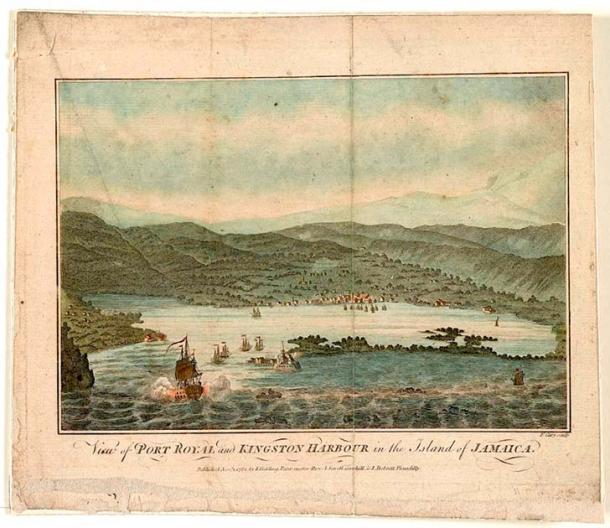
View of Port Royal and Kingston Harbour in the Island of Jamaica. (Public domain)
The Colonial History of Port Royal
Port Royal was first occupied by the Taino Indians. While it is unclear whether the Taino settled in that area or not, it is known that they used Port Royal during their fishing expeditions. The Spanish colonization of Jamaica brought this area under Spanish control, although, like the Taino before them, they did not have much use for it.
- Unexplored Sunken Pirate City in the Caribbean Will Finally Be Revealed
- Port Royal and the Real Pirates of the Caribbean
In 1654, an English expedition under Robert Venables and William Penn was sent by Oliver Cromwell to capture the island of present day Haiti from the Spanish. Defeated by the Spanish, and fearing to report their failure to Cromwell, Venables and Penn decided to head southwest to the poorly defended island of Jamaica.
They succeeded in capturing the island, and a fort, named Fort Cromwell was built, around which the settlement of Point Cagway sprang up. When Charles II was restored to the English throne, the fort was renamed Fort Charles, and the settlement became Port Royal.
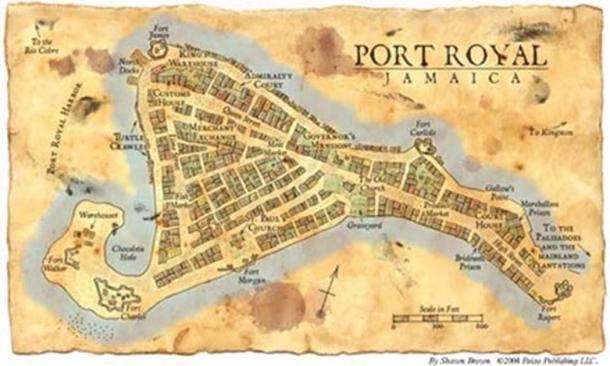
A map of Port Royal, Jamaica. (Sharon Brown)
As the area commanded a large and well-protected harbor, along with deep water close to shore, Port Royal soon became an important trading center in the Caribbean, and it was not long before it was the busiest and wealthiest port in the West Indies.
Due to its strategic position on the trading routes between the New World and Spain, Port Royal was a highly attractive place for pirates who sought to become legitimate privateers. One of the most famous and successful privateers at Port Royal was Henry Morgan, who eventually became the Lieutenant Governor of Jamaica.
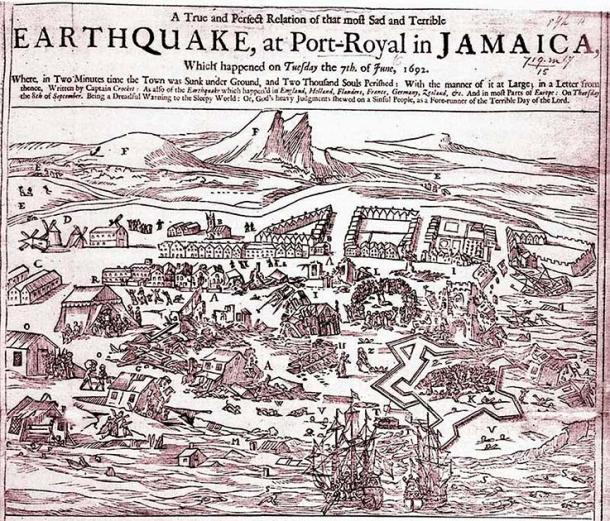
Sunken Pirate City of Port Royal 1692. (Public domain)
Cataclysm at Port Royal: The Sunken Pirate City
Port Royal’s glory days soon came to an end when a massive earthquake and tsunami struck in 1692. In just a few minutes, two-thirds of the town (33 acres) sank into the sea, 1,600 people were killed and 3,000 were seriously injured. Another 3,000 people died in the days following the earthquake from injury and disease.
In the immediate aftermath of the earthquake, it was common to ascribe the destruction to divine retribution on the people of Port Royal for their sinful ways. Members of the Jamaica Council declared: “We are become by this an instance of God Almighty's severe judgment.”
Since Port Royal only existed for 37 years before destruction by the earthquake, it is one of the few catastrophic sites where cultural features and material are found more or less undisturbed, preserved by the oxygen-depleted underwater environment.
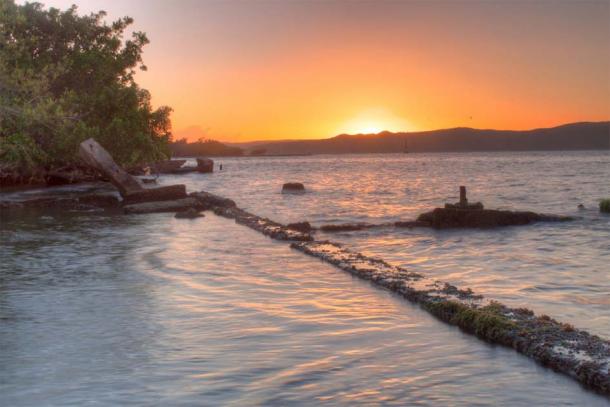
Sunset at Port Royal in Jamaica. (kreygscott / Adobe Stock)
Exploring the Submerged Secrets of Port Royal
While some areas of the city were shattered by the earthquake, leaving little more than a pile of rubble, other sections simply slid into the sea, remaining almost entirely intact. The UNESCO site describes one such street:
“Cast-iron skillets and pots were still in the hearth with charred wood from the fire concreted to their surfaces. Stacks of pewter plates were found as they fell from their storage space under the stairs in what is surmised to be the serving area of one building. The remains of children were found among the broken walls of their home. Also, uncovered were the remains of barrels containing the trash of the day, including the trimmings of a man's beard and hair in a yard area. Many ceramics were found intact or broken where they fell. Impeccably preserved.”
- Pirates and the Earthquake that Destroyed Port Royal (Video)
- Hostis Humani Generis: Pirates Of Port Royal And Tortuga
Even the precise time of the earthquake was able to be determined following the discovery of a pocket watch in the ruins in 1960 by Edward Link, its hands frozen at the instant of disaster. The pinpointing of the exact time of the catastrophe was a first for archaeology.
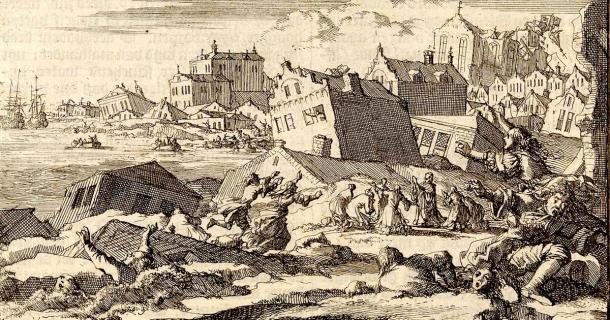
Port Royal earthquake 1692 by Jan Luyken. (Public domain)
The significance of the Port Royal underwater archaeological site lies in the fact that the earthquake preserved many aspects of the inhabitants' daily existence at that moment in time. UNESCO states that:
“the underwater assemblage of excavated buildings in the sunken city is an excellent example of an architectural ensemble representing everyday life in a colonial port town. Combining the cache of historical documents with the underwater excavations has allowed a detailed reconstruction of this significant stage in human history to emerge. Study of the buildings and landscape has contributed significantly to understanding 17th century town-planning, architecture, diet, cooking activities, and other aspects of daily life.”
Today most of the remains of the 17th century city lie under up to 40 feet (12 meters) of water. Since the 1950s divers have been exploring and cataloguing the submerged city. Special access from the government is required to dive in the restricted Port Royal ruins area, but many of the items recovered over the years can be seen at the Museums of History and Ethnography at the Institute of Jamaica in Kingston.
Top image: Port Royal underwater archaeological site. Source: Wonderous World
References
Black, A. 21 July 2016. “Sunken Pirate City at Port Royal” in Atlas Obscura. Available at: https://www.atlasobscura.com/places/sunken-pirate-stronghold-at-port-royal
Davis, N. 25 July 2012. “Jamaica's 'wickedest city' Port Royal banks on heritage” in BBC. Available at: https://www.bbc.com/news/world-latin-america-18601357
Hamilton, D. L. No date. “The Port Royal Jamaica Project” in Nautical Archaeology Program of Texas A&M University. Available at: https://liberalarts.tamu.edu/nautarch/crl/port-royal-jamaica-project/
UNESCO. 2009. “The Underwater City of Port Royal” in UNESCO. Available at: https://whc.unesco.org/en/tentativelists/5430/
















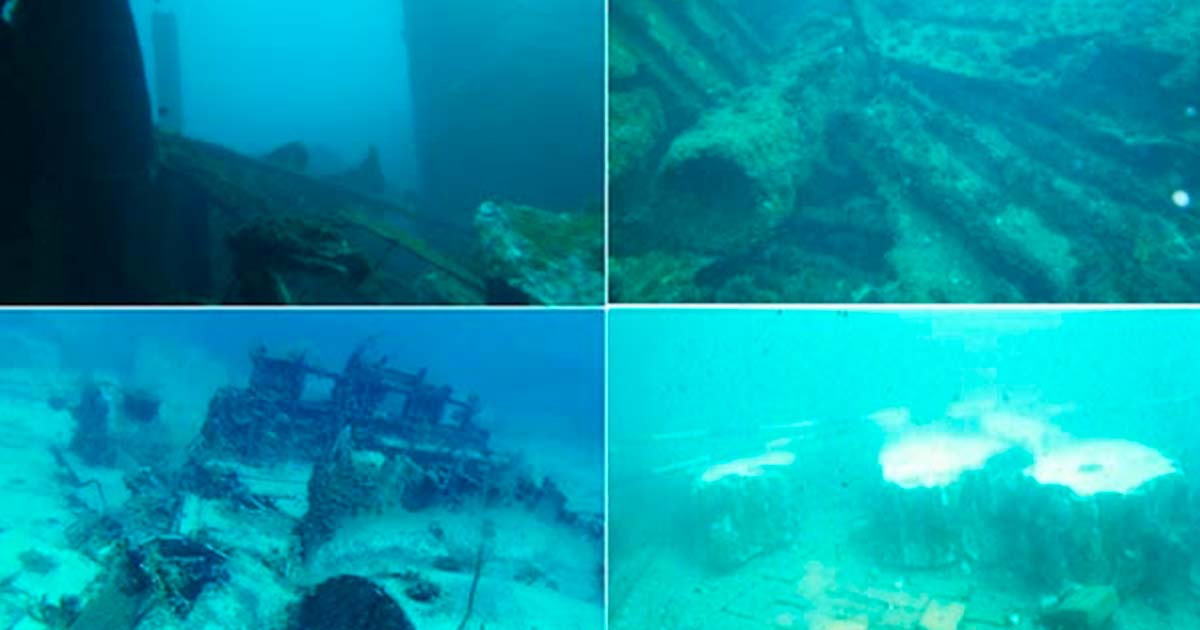

Comments
"We are become by this an instance of God Almighty's severe judgement." More like a victim of woeful town planning.
Hi Mike, thanks for your comment. The source where we obtained the photo incorrectly described it as the Port Royal archaeological site. Upon further checking, we have confirmed that you're right and so we have updated the picture. Thanks again, April
find it funny that you are using a pic for the sunken Port Royal article of a underwater cemetery,
in Florida I believe...